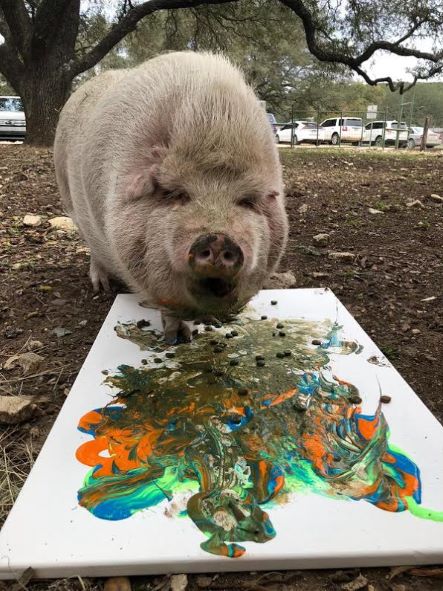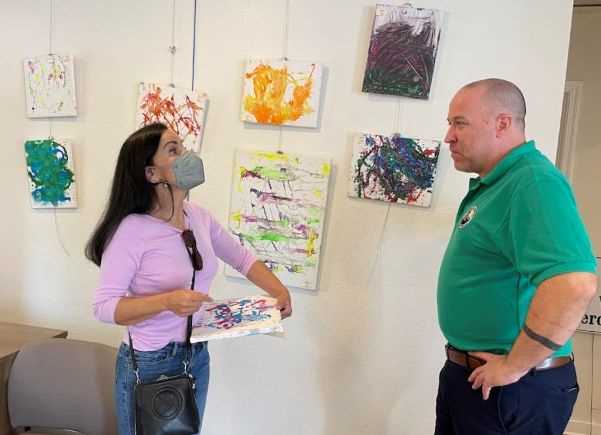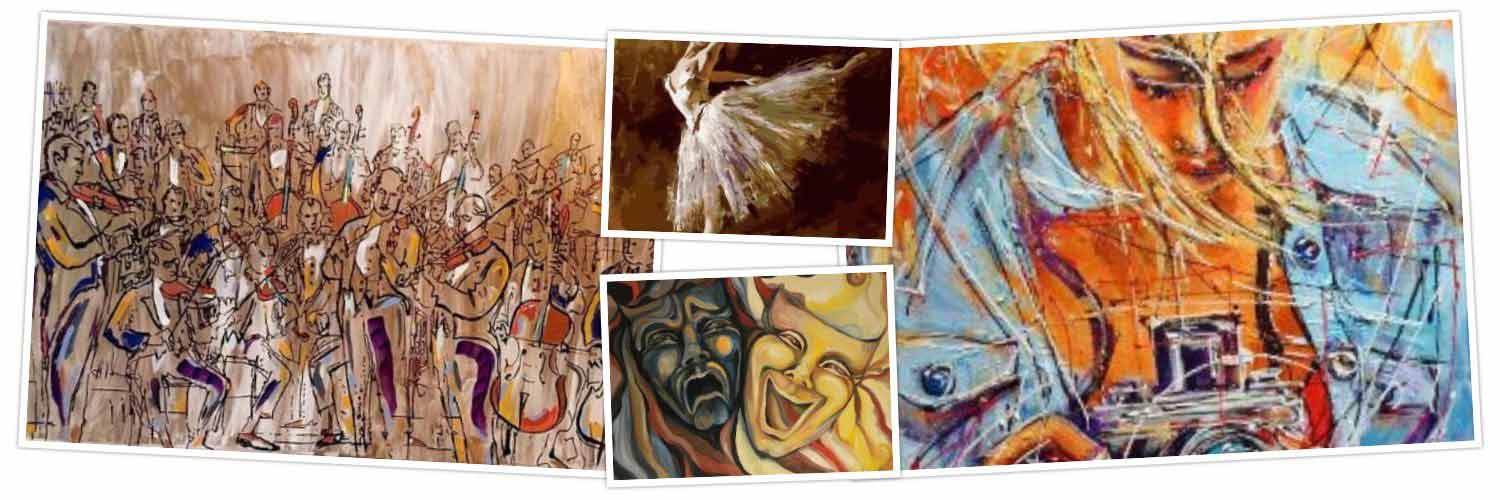Animals that make “Art”
By BERIT MASON and JASMINA WELLINGHOFF
Anyone who’s plunked a brush into a pot of paint, pushed it about freely on a fresh, white canvas, knows the relaxed feeling or intense focus that comes with making art. One escapes the real world for fantasy. Art can be a career, a profession, self- expression and it can be therapy. In fact, art has long soothed patients with mental needs, and occupied children who happily draw away in class.
Employing creative pastimes to ward off boredom is something any parent or retirement community activities director would understand.
At the Kendalia-based Wildlife Rescue and Rehabilitation ranch, they have animals make art – in their own way. The facility was founded 45 years ago by animal lover, Lynn Cuny, who, back then, was a young veterinarian assistant and zoo technician with a devotion to animals. She saw how injured urban wildlife were left to die on the roadsides, ignored and tossed aside. And she also saw how animals that were meant to roam in their natural habitat often ended it up as caged pets. So, Cuny brought them to her home to care for them. The rescued group included raccoons, possums, armadillos and other four-footed creatures.

According to her bio on the WRR, she was making some money with a paper route to support her mission. But once the word spread, she started getting calls about animals that needed rescuing. She dreamed of a large natural area where animals could thrive, and her dream eventually became reality thanks to the generosity of a like-minded donor. Today, WRR is a $3 million operation, where Cuny and her staff of veterinary and wildlife professionals house and treat lions, black bears, snakes and opossums. And they also take in donkeys, dogs and cats. While most are eventually released, for some 600 animals, the Kendalia campus is their “forever home.”
For those animals that cannot return to nature, keeping them engaged and occupied while in captivity can be a challenge. That’s why staffers must entertain them through “enrichment activities,” including art.
“We have certain species that are more excited by the activity than others,” noted WRR Communications Manager, Mackenzie Perez. “We buy acrylic paint that’s not toxic, safe for kids and animals. We squirt it onto canvases. With some species like birds, we put down bird seed to get them interested. If they show no curiosity, we give them a different option.”

Pigs seem to really enjoy the art activity. “Pigs take to something like this because they are very tactile with their noses, constantly rooting about, looking for things, so that is their instrument, if you will, to really scratch at the canvas and work with paint,” explained Cuny.
The coatimundis species (from the racoon family) also like art making. “They are curious by nature and they love the visual of smearing the paint,” added Perez. “They will get their little snouts in it and smear it around. Of course, we do wipe them afterwards and clean them up. All the primates are very curious. But the chickens will just walk on it.
One day, this simple enrichment activity became a fundraiser.
“Frankly, it had not occurred to me,” said Cuny. “But people offered to buy “the paintings,” and that’s how Artistic Animals event was conceived.”
Artistic Animals is an annual December show where people come to buy animal “art.”
“Creating the artwork started 12 years ago but we started selling it about five years ago,” noted Perez. “Once we realized that people were actually interested in the art the animals were making, we decided to make it a fundraiser.”
This year’s event, on Dec.10, featured 38 paintings, with some 40 animals participating. Twenty-eight canvases sold. Several animals made a painting together and individuals made multiple works. The sales exhibit was held at a small house on Babcock, which was decorated for the holidays. Smaller pieces were for sale at $100, although a stand-out piece, done by a black bear went for $200. Visitors, milled about, admiring the pictures while sipping champagne.
One canvas was the result of a pot-belly pig spreading paint with her snout and walking on it, while another was produced by a snake slithering in orange and yellow paint, and producing what looked like a colorful sun. A chihuahua had a piece in the show as did wolf-dog and a donkey. “Most animals can see in color,” said Perez.
Visitor Denise O’Donnell bought a painting by a Capuchin monkey.
“A real cutie-pie!” she said. “He did a wonderful job with blue and pink.”
The proud new owner planned to hang the piece next to a painting she created, to see if guests would notice the difference.
“I like the colors! The more that they can do to enrich their lives and get their brains going, the better, so that (the animals) don’t become bored and destructive,” said O’Donnell.
Nearly $4,500 was raised, collected from art sales, ticket sales, raffle tickets and donations.
“The event is not a huge fundraiser for us but it’s a great outreach and provides donors the chance to have a tangible item from the wildlife they support,” observed Perez. “Also, we were excited to have this event act as a mini grand opening for our new location.”
In addition to the large Kendalia campus, where wild animals are attended to by veterinarians and staff, WRR maintains a centrally-located refurbished house where injured or orphaned urban wildlife can be dropped off, to later be moved to the countryside.
WRR rescues some 10,000 native species of animal per year. Permanent residents include bears, marmosets, bobcats, goats, cows, foxes and parrots. Domesticated animals are equally welcome.
“Animals do play in the wild. Some people do not think of that but they do,” remarked Cuny. ‘So, fooling around with paint is like playing in the mud, extensions of curiosity and a desire to have fun.”
But paint or don’t paint, it’s entirely up to them.
——————————————————————————————————————- If you have just recued a bird, rabbit or a squirrel, first call the WRR at 830-336-2725. The in-town facility is at 166 Babcock Rd., 78201
